1. DIgital Identity
1.1. Presentation By Sue Beckingham
2. In the light of increased connectivity how is social change determining use of E-Tools.
3. Tools
3.1. Synchronous
3.1.1. Real time Back channel use during live session
3.1.1.1. Other - Exemplars in HE
3.1.1.1.1. Hotseat
3.1.1.1.2. chat - Twitter Stream
3.1.1.1.3. Cover it Live
3.1.1.1.4. Use of Storify
3.1.2. messaging
3.2. Asynchronous
3.2.1. e-mail
3.2.2. forums
3.2.2.1. Lurking
3.2.3. Wikis
3.2.3.1. Exemplar
3.2.4. Blogging
3.3. Synchronous/Asynchronous/ MultiModal
3.3.1. MindMaps
3.3.1.1. Exemplars
3.3.2. EtherPad
3.3.3. Twitter
3.3.4. FlashMeeting
3.3.5. Google Hangout
4. Other Units
4.1. Unit 7
4.2. Unit 6
4.3. Unit 9
4.4. Unit 4
5. Teaching
5.1. Scenarios/ Arenas
5.1.1. Online
5.1.1.1. Reading
5.1.1.2. Traditional/ evolving
5.1.1.2.1. Courseware
5.1.1.2.2. Lecture
5.1.1.2.3. Collaborative Online Tools exemplars
5.1.1.3. Progressive/ Emergent
5.1.1.3.1. Emergent Pedagogies
5.1.1.3.2. Assessment
5.1.2. Face to Face
5.1.2.1. School Exemplars Flipped Teaching HE to School
5.1.2.1.1. Students as Apprentices - HE to school model
5.1.2.1.2. School collaborative pedagogical models
5.1.2.1.3. School Based Training
5.1.3. Blended
5.1.3.1. Event Driven Learning
5.1.3.1.1. Exemplars
5.1.4. Institutional
5.1.4.1. Action Research
5.1.4.1.1. Exemplars
5.1.4.2. Use of LMS
5.1.5. Cross organisation arenas
5.1.5.1. Case Study of Professional Association Community of Practice
5.1.5.1.1. The Emergence of CAS
6. Learning
6.1. Face to Face
6.1.1. Blended Learning
6.1.1.1. Flipped teaching
6.1.1.2. Event Driven Learning
6.1.1.2.1. Exemplars
6.1.1.3. Blended
6.1.2. Students as Apprentices - HE to school model
6.1.3. School collaborative pedagogical models
6.2. Online Learning
6.2.1. Formal
6.2.1.1. Use of e-tools by Faculties
6.2.1.2. VLE
6.2.1.2.1. Non-Linear
6.2.2. Informal
6.2.2.1. BYOD
6.2.2.1.1. BYOD Exemplars
6.2.2.1.2. LA Exemplar
6.2.2.1.3. Mobile Learning
6.2.2.1.4. JISC Mobile Learning InfoKit
6.3. Communities of Practice
6.3.1. CPD
6.3.1.1. Teacher Professional Dev Paper
6.3.2. Emergent Learning / Heutagogy
6.3.2.1. People + Resources = Learning
6.3.3. PLN
6.3.4. Etienne Wenger
6.3.5. Building Online Communities across sectors
6.4. Information Literacy
6.4.1. Digital Literacies
6.4.1.1. Web Literacies
6.4.1.2. Exemplar JISC Digital Literacies Program
6.4.1.2.1. Distributed
6.4.1.2.2. Baseline Institutional Audit
6.4.1.2.3. Video exemplars
6.4.1.2.4. Summary of the Professional Association Baseline Reports
6.4.1.2.5. Summary of Project Baseline Reports
6.4.1.3. Doug Belshaw
6.4.1.4. Social Media Literacies
6.4.1.5. JIsc - Emerging Practice in a Digital Age
6.5. Rhizomatic Learning
6.5.1. Exemplars
6.5.1.1. Pinterest Group on Rhizomic Learning
6.5.2. Connected Communities
6.6. VLE
6.6.1. Linear
6.6.1.1. Blackboard
6.6.1.1.1. HE Portal
6.6.1.2. Moodle
6.6.1.3. Academic MOOC
6.6.1.3.1. Coursera
6.6.1.3.2. Udacity
6.6.1.3.3. Udemy
6.6.1.3.4. EDx
6.6.1.4. PLP
6.6.1.5. eportfolios Jisc exemplars
6.6.1.5.1. JIsc InfoKits on eportfolios
6.6.1.5.2. Video exemplars of e-portfolios in FE/HE
6.7. Moocs
6.7.1. Connectivism
6.7.1.1. HE Exemplar
6.7.2. HE OU Exemplar Mooc Autumn 2012
7. Content
7.1. Scope
7.1.1. Content
7.1.1.1. Delivery
7.1.1.1.1. Presentation
7.1.1.1.2. Open
7.1.1.1.3. Institutional
7.1.1.2. Research Tools
7.1.1.2.1. Zotero
7.1.1.2.2. Curation
7.1.1.2.3. Archiving
7.1.1.2.4. Plagiarism/ Citation
7.1.1.2.5. JISC InfoKits Tools
7.1.1.2.6. Document Preparation
8. Discussions
9. What contexts and Scenarios are beginning to determine learning if any.
10. Platforms vs Distributed Resources or Blend
10.1. Institutional or Adaptive Learning?
10.1.1. Further Reading
10.1.1.1. Smart Mobs
10.1.1.2. Everything is Miscellaneous
10.1.1.3. Here Comes Everybody

